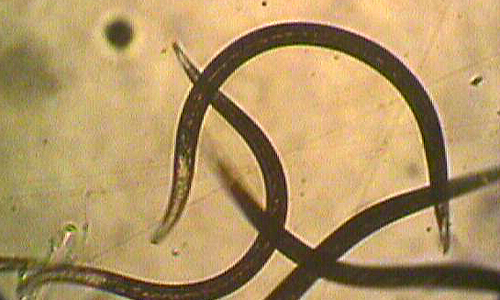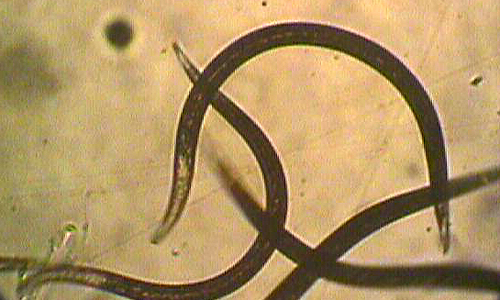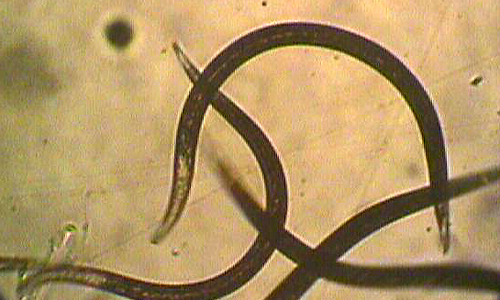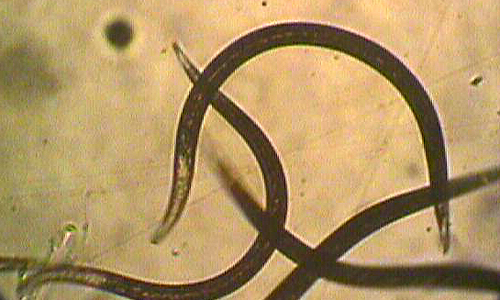Annual bluegrass weevil
What are Annual bluegrass weevils?
Annual bluegrass weevil (Listronotus maculicolis) is one of the most economically important pests of turfgrass and it got its name as annual bluegrass weevil because it prefers to feed mostly on annual bluegrass (Poa annua) than any other grass species. Although bluegrass weevil develops through four different developmental stages including eggs, larvae (grubs), pupae and adults, only larva is the most damaging stage to annual bluegrass. Young larvae feed like borers inside the stems and mature larvae like cutworms feed at the crown of plants. Adults of annual bluegrass weevil mostly feed on foliage by making notches in the blades.
Facts (show all)
- List of the most economically devastating species of Annual bluegrass weevil
-
- Annual bluegrass weevil, Listronotus maculicolis
- Biology of Annual bluegrass weevil
-
Life cycle of Annual bluegrass weevil consists of egg, grub (larva), pupa and adult stages. Annual bluegrass weevil overwinters as adults in the litter under trees and shrubs that are close to the areas where annual bluegrass is grown. Early in the spring when temperature begins warming up, overwintering adults become active and move into actively growing annual bluegrass. Then these adults start feeding on the grass leaves. While feeding, adults mate and females lay egg under the leaf sheath by making holes. Eggs hatch within a week early in the May. After hatching, young larvae immediately start feeding by tunneling in the grass stems. While feeding, the larvae of bluegrass weevils develop through four different stages and become mature. Matured larvae then come out of the tunnels and start feeding externally on the grass stems at the crowns and cause severe turf loss.
- What type of damage is caused by Annual bluegrass weevil?
-
Major symptoms of bluegrass weevil damage include yellowing of grass leaves and dying of the grass. Adults of annual bluegrass weevils cause damage to grass leaves but major damage to annual bluegrass is caused by their four larval stages. After hatching from eggs, young larvae generally bore into grass stems and feed internally by tunneling through plant tissue until they become mature. The matured larvae then come outside the tunnels and beging feeding externally on the grass stems at the crown of the plants. Like cutworms, larave of annual bluegrass can cut grass stems at the crowns from roots. Thus the severely infested annual bluegrass with weevils Severally can die quickly.
- Biological control of annual bluegrass weevils
-
Three species of entomopathogenic nematodes including Heterorhabditis bacteriophora, Steinernema carpocapsae and Steinernema feltiae are currently used as biopesticides to control annual bluegrass weevils. For the effective control of annual bluegrass weevils, these nematodes can be applied at the rate of 23000 nematodes per square meter area. If these nematodes are applied in the late May or early June, they can control over 65% population of annual ble grass.
- Following beneficial entomopathogenic nematodes are effective against annual bluegrass weevils
-
- Heterorhabditis bacteriophora
- Steinernema carpocapsae
- Steinernema feltiae
- Research Papers
-
McGraw, B.A. and Koppenhofer, A.M.2008. Evaluation of two endemic and five commercial entomopathogenic nematode species (Rhabditida: Heterorhabditidae and Steinernematidae) against annual bluegrass weevil (Coleoptera: Curculionidae) larvae and adults. Biological Control 46: 467-475.
McGraw, B.A. and Koppenhofer, A.M.2009. Population dynamics and interactions between endemic entomopathogenic nematodes and annual bluegrass weevil populations in golf course turfgrass. Applied Soil Ecology 41: 77-89.
McGraw, B.A., Vittumb, P.J. Cowlesc, R.S.and Koppenhofer, A.M. 2010. Field evaluation of entomopathogenic nematodes for the biological control of the annual bluegrass weevil, Listronotus maculicollis (Coleoptera: Curculionidae), in golf course turfgrass. Journal Biocontrol Science and Technology. 20: 149 – 163.






